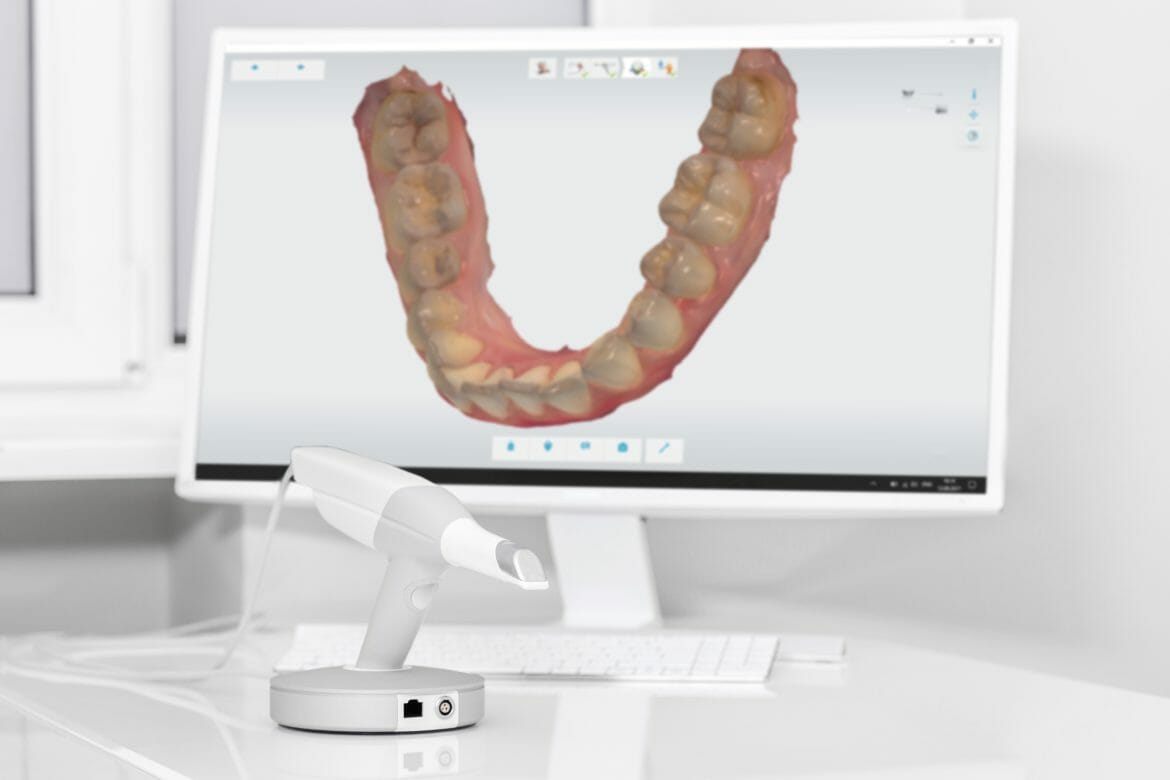A dental appointment often includes a variety of procedures, including the taking of impressions of both the upper and lower teeth. These impressions are necessary for a variety of treatments, including crowns, veneers, and dental bridges. They also serve as an important part of your dental record.
Thanks to advancing technology today and the advent of the digital dental scanner, the previous technique for impression-taking involving mouth trays and a gooey substance has taken a backseat. There are distinct differences between the two options, and knowing these can help make your next trip to the dentist easier.
What Are Dental Impressions and Why are They Needed?
A dental impression is essentially an imprint of your teeth and oral tissue. It shows how your teeth and gums fit together inside your mouth and allows your dentist to create a cast or mold.
There are several uses for impressions of upper or lower teeth, and these include the design and creation of the following:
- Dental crowns, bridges, and dentures
- Dental implant abutments
- Custom nightguards or mouthguards
- Custom trays for take-home whitening kits
- Veneers
Also, dental images will be added to your file and can be referred back to if you require further dental restoration work or repairs. Ultimately, this saves you time and makes future dental visits much more pleasant.
What is a Digital Dental Scanner?
A digital dental scanner is a lightweight, wand-like tool inserted into the patient’s mouth to capture high-quality scans or images of teeth and gums. These images are then immediately projected onto a computer screen and used to make various dental restorations or other dental aids for the patient.
What is the Difference Between a Digital Dental Scanner and Past Impressions Options?
More likely than not, your dentist has made dental impressions of your teeth, especially if you required any serious dental work in the past. You may remember the experience, and that memory may not be too pleasant.
Fortunately, today, that experience is changing thanks to the digital dental scanner. Here are the important differences between it and the past impression option.
Less Discomfort
The past impression method requires the use of awkward mouth trays filled with a putty-like material, such as alginate. These trays are inserted onto your upper and lower teeth, and you have to bite down gently to hold them in place for several minutes, often experiencing a gagging sensation as you do so.
With the digital dental scanner option, instead of using those goo-filled trays, your dentist will delicately maneuver the handheld device around inside your mouth and take digital images of teeth, gums, and mouth structures.
Quicker Process
The digital scanner option allows for a quicker impression process, producing numerous images to more accurately and efficiently design restorations, trays, or mouthguards. Patients spend less time in the dentist’s chair and do not require time for cleaning up the messiness created by the past impression method. In addition, with digital images, the turnaround time for both impressions and the resulting restorations is faster.
Less Chance for Errors
Dental impressions need to be precise as they create a model for well-fitting restorations. The past impression method option requires more steps and materials, and errors can easily occur due to improper settings, defects in the material, and the patient’s discomfort in holding the trays in place. The digital dental scanner, on the other hand, has a less chance of producing errors, such as distortions in the final results.
Higher Accuracy
Impressions need to be as accurate as possible so your restoration, tray, or guard will fit better and meet your particular needs. The past tray method requires that the dentist study the impressions to determine if they can be sent to the dental lab. If errors are discovered, the patient must undergo the process again.
With the digital dental scanner, the dentist can evaluate impressions on a computer screen and magnify images for a closer look when necessary. If something is missing, the dentist may be able to rescan the one area without having to start completely over, thus creating an accurate depiction of the state of your teeth and gums at that particular time.
Contact Bateson Dentistry to Find Out How Digital Impressions Can Benefit You
At Bateson Dentistry, we are proud to offer digital scanning to our patients for a more comfortable experience when it comes to taking impressions. We use the 3Shape Trios Scanner, which allows for more accuracy, efficiency, and increased comfort for patients. The numerous images it provides help with fast-turnaround times for the delivery of needed restorations and more.
Find out how digital impressions can benefit you by contacting Dr. Bateson and her team today. We provide preventative, restorative, and cosmetic dentistry to our patients and look forward to helping you with all your dental needs.

